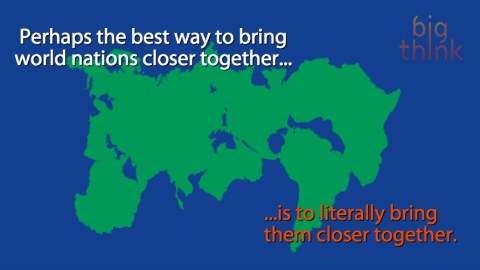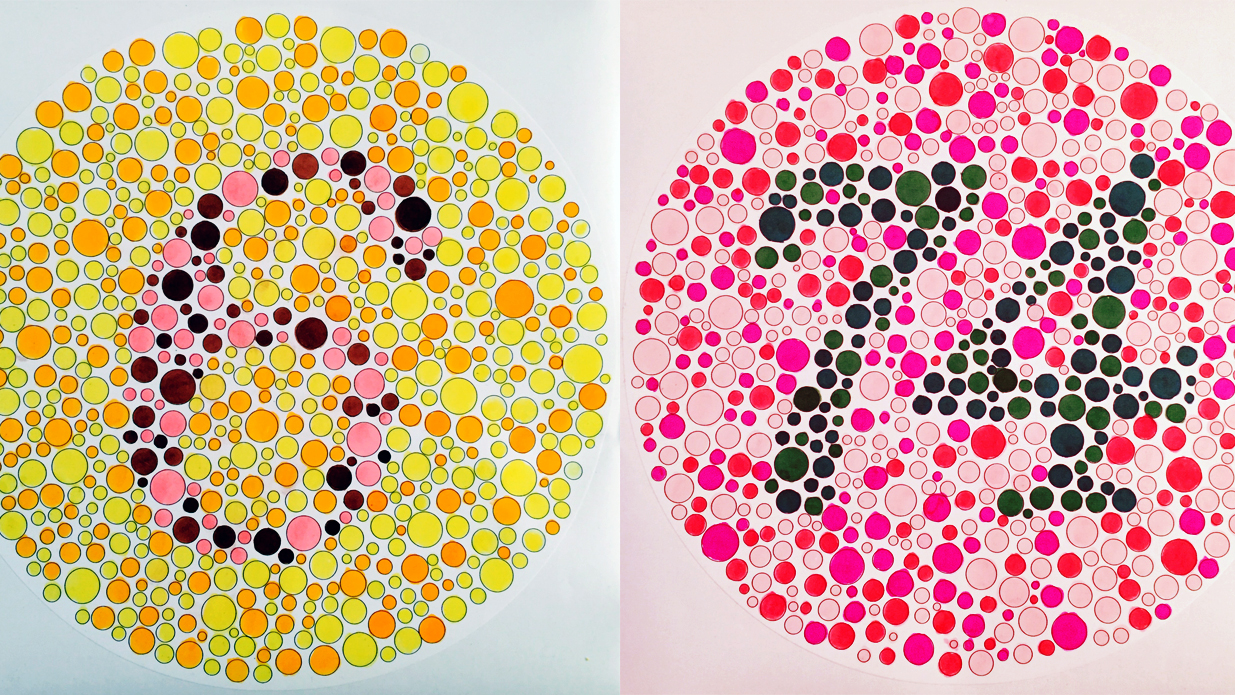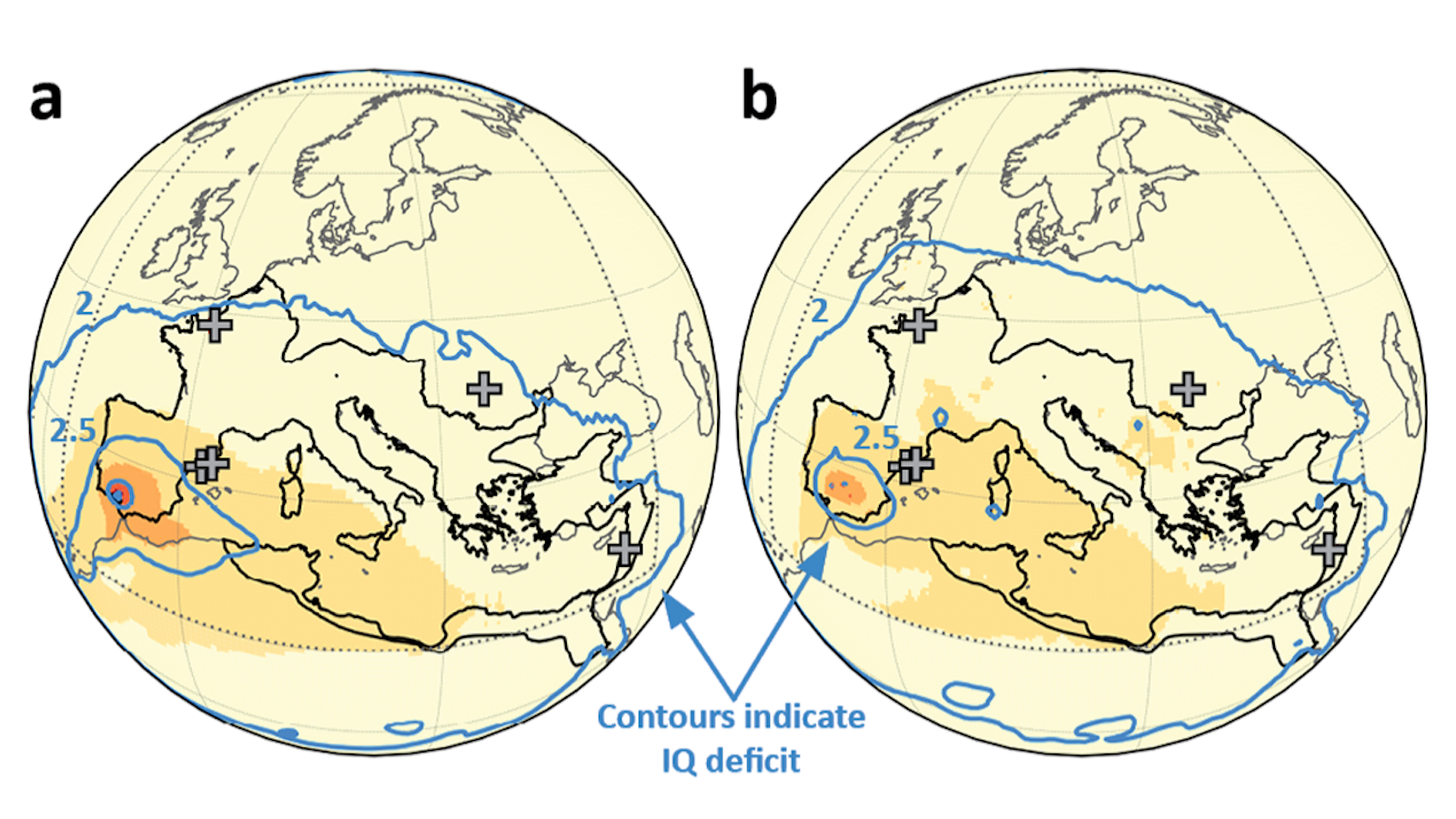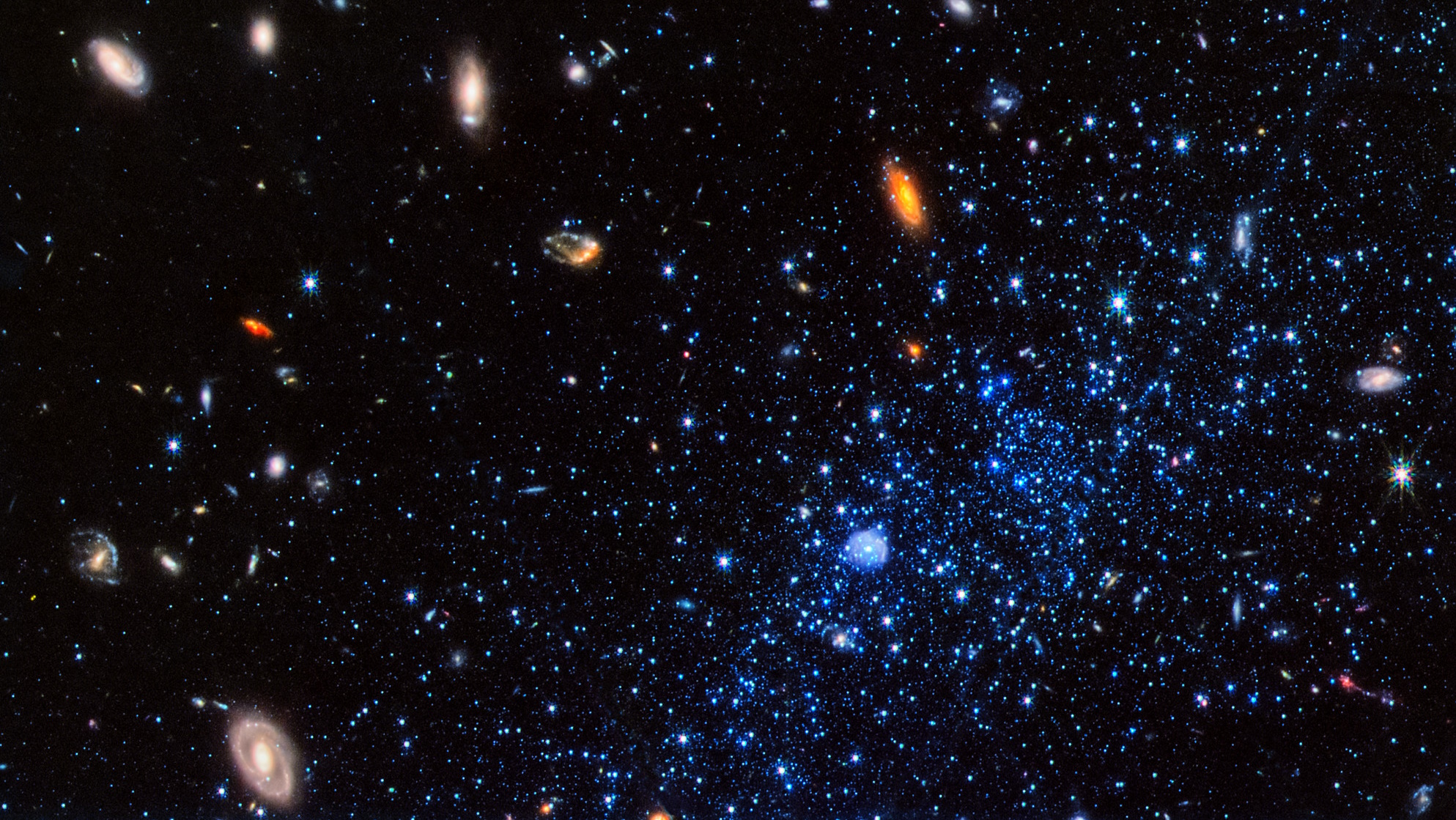Genius or Crazy? Pangaea Reborn

Genius or Crazy presents innovative and unorthodox solutions to complex problems. Current technological feasibility is irrelevant: This is a thought exercise. Is it genius? Is it crazy? You decide.
Read on below, vote, and let us know what you think in the comments.
Jonathon Keats is at it again.
Fresh off his latest scheme, in which he developed a means by which to be married by the laws of physics, the mad scientist of experimental philosophy is preparing to tackle another of life’s major challenges: climate change. But instead of concocting a weather machine or teaching herons to recycle or any of the other plausible things he’s likely to do, Keats’ plan is to close the international divide that prevents meaningful diplomacy.
And by “close the international divide,” he means literally.
Supercontinental Drift
According to Keats, we can’t reasonably expect 190+ nations spread across the globe to suspend their squabbles long enough to reach agreement on climate action. That’s why he’s proposed the formation of a brand-new supercontinent, tentatively dubbed Novopangaea or Pangaea Optima. If all goes well, the newly shifted continental mass will offset historic rivalries and promote new global harmony.
“By closing the Pacific Ocean,” Keats explains, “the United States can be brought into geopolitical alignment with China and Russia. The new common ground can provide a physical foundation for their shared global future.”
“Keats’ plan is to close the international divide that prevents meaningful diplomacy. And by ‘close the international divide,’ he means literally.”
Keats and his newly established Political Tectonics Lab plan to tap into the Earth’s internal heat in order to facilitate the continental shift:
“Earth’s internal heat, which keeps continents afloat on a liquid mantle, is generated by the radioactivity of elements such as uranium. Mr. Keats proposes to make use of the energy by building nuclear reactors that plug into rifts on the sea floor. Extracting heat to turn large steam turbines, these nuclear reactors will locally cool the magma. Electricity generated by the turbines will be used [for] power. Since the flow rate of magma and mantle convection currents are the basic mechanisms of continental movement, making Pangaea Optima is merely a matter of intelligently managing subcrustal heat.”
The Lab will present its proposal for “diplomatic geoengineering” in an exhibit at San Francisco’s Modernism Gallery beginning October 22.
Dancing Between Art & Science
I’d be remiss not to point out that Keats is not entirely serious about Novopangaea, nor is he ignorant of the many new problems that would arise should his plot come to fruition. His work has always straddled a fun line between art and science. This is the guy, after all, who once sold interdimensional real estate and attempted to genetically engineer God.
Keats’ experiments are meant to challenge and shift perspectives. He begins by asking a naive question not unlike something a precocious child would propose. Keats develops a thought experiment around the question and then attempts to make that thought experiment incarnate no matter how zany or theoretical.
So, in this case, the question is something like, “Would addressing climate change be easier on a supercontinent?” The thought experiment is the creation of Novopangaea. The perspective here is that geopolitical cohesion is so important that if the nations, as they’re arranged now, can’t play nice, we’re going to have to make it so that everyone shares the same stakes.
One of the Political Tectonics Lab’s subterranean magnetrons, which will heat up magma in other rift areas with intensely focused microwaves.
Most geologists predict that Novopangaea will form on its own accord 250 million years from now. That’s too long to wait for Keats, and maybe the world as well. He’s designed this experiment and creating the museum exhibit in anticipation of the United Nations Climate Change Conference in Paris this December. He and the Political Tectonics Lab have offered their services to the U.N. on a pro bono basis.
Genius or Crazy?
Be sure to cast your vote in the poll at the top of this piece. Let us know what you think of Keats’ experiment(s) in the comments below as well as on Facebook and Twitter.
Images courtesy of Jonathon Keats




